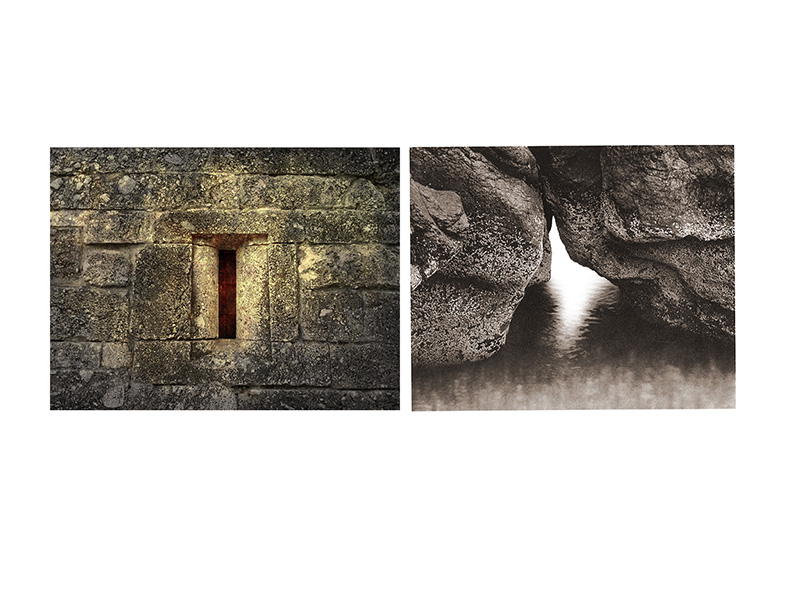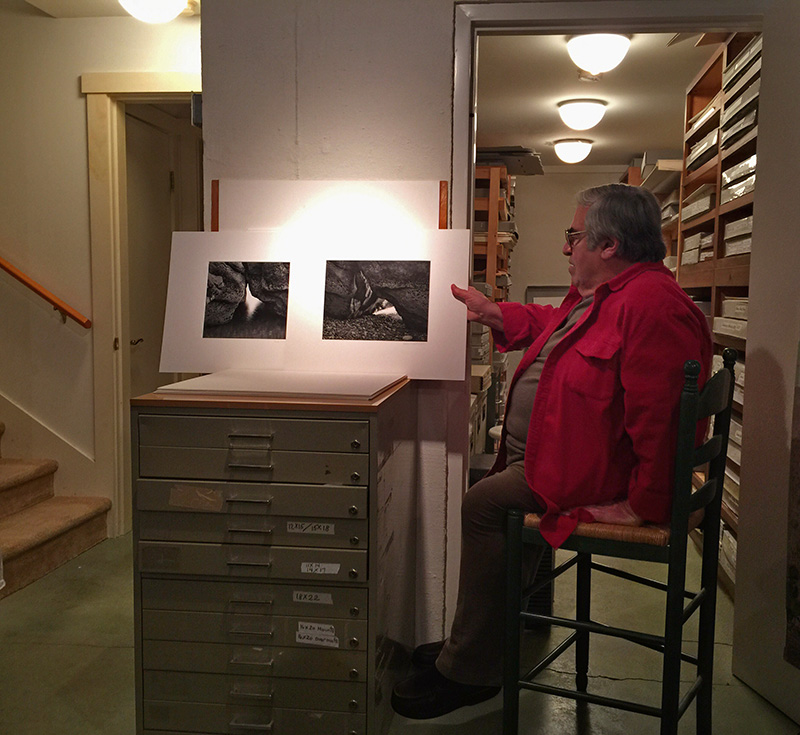Many times, buyers of our prints have expressed their surprise at how different the real thing is from the JPEG they saw online. I feel like I'm used to that, in a general way. And yet I still was unprepared for my own reaction to the real print.
Something about this print (here's the link) really grabs me. Since the proof arrived here five or six days ago I've been looking at it a lot. What I like about it doesn't seem to exist in the JPEG above, and yet I'm not able to quite put my finger on what it is.
I don't think the print is exceptional in any technical sense. It's more vivid, richer, deeper, than you might think it is based on the JPEG. But that's to be expected.
Ctein sensed it right away. Privately he wrote to me:
I am seriously torn. I don't really have the cash right now, but I missed out on their last sale. The thing is, I honestly can't tell from the JPEG on the website whether this photograph appeals to me. I think that too much of its impact is based on fine detail that comes out looking like oatmeal in a low-resolution JPEG. Unlike their first one, I think the devil will be in the details (to coin a phrase).
It's not fine detail, I don't think. Maybe it's that the texture of the print so clearly speaks of the texture of stone. The blacks seem to sparkle.
There's something deep and amazing about the colors hiding in the color print, too. Again it's not technical—it's not bright or saturated. Rather the opposite—it's very subtle, yet it seems to glow. Do you notice the reddishness inside the opening in the wall? It sings in relation to the colors shimmering in the stone. It seems...mysterious.
Whatever it is about this print, it gets to me. I've put it under the pendant lights in the kitchen and I stop to look at it every time I go by. And even though I'm used to such things, it seems further from the JPEG you see here than most prints are from their online representations. I can't really guess if you're going to like it as much as I do. But I think you'll be amazed by how different the effect is. Unfortunately it sort of points out one of the inherent limitations of online sales—at least in a gallery you see exactly what you're buying before you decide whether to buy it. This is a print that should be seen.
(You can return it for a full refund if you don't like it, I should point out. All our sales are "satisfaction guaranteed.")
I'm already planning to frame this one with low-reflectance museum glass, in the hope that it will allow the paper texture to make it through the glass.
John Paul took his Black and White Mastery Workshop to visit Paul on Thursday and, purely by chance, Paul pulled out the silver gelatin version of his image included in our print—along with an alternate version. Here he is showing it to the workshop participants.
Here's the link to the print again, if you're interested. The sale ends Monday, at 4:00 p.m. Central Time.
Mike
Original contents copyright 2014 by Michael C. Johnston and/or the bylined author. All Rights Reserved. Links in this post may be to our affiliates; sales through affiliate links may benefit this site.
(To see all the comments, click on the "Comments" link below.)
Featured Comments from:
No featured comments yet—please check back soon!





I suspect that part of the difference is in that the Jpeg is a transmission screen image, and the print is reflected light off a chosen surface. I also think that having compared many screen shots of raw and jpeg images with the same images printed on a number of surfaces, that some images just look better one way or the other. And not always in favor of the print.
[Very true. I've experienced several situations where a great-looking screen image doesn't look good in a print. --Mike]
Posted by: Richard Newman | Saturday, 13 December 2014 at 11:05 PM
Is it just me - in the right image I see two faces,which could be Statler and Waldorf from the Muppet Show?
Posted by: Johannes Leitner | Sunday, 14 December 2014 at 02:05 AM
Do people really buy prints, having only seen a jpeg that small?
I may be completely ignorant of how this is meant to work, but if I'm paying £300 for a print, I'd like to see high res image first if I can't get to the gallery and see it in person.
Posted by: Chai | Sunday, 14 December 2014 at 11:28 AM
Image for print and image for screen requires different post processing to start with - it is two very different animals.
When you PP for screen you have another problem: You can see how it looks on your screen - and only that. Published on the web, it can be viewed on any type of screen. I have a hardware calibrated 92% Adobe RGB screen and I regularly re-calibrate it. How many do that?
Subsequently I do not bother much to publish for the web and instead optimize for print. At least so far. We now see 5k screens (Apple) and also screens that do 99% Adobe RGB. The best screens (if large) can be a viewing tool better than print. Which brings us back to the time when color slides projection was the ultimate way to look at (color)photos.....
Note: An excellent, from film, enlargement by a trained copyist paper B&W is the most beautiful photo you can see - ever!
Posted by: Per Kylberg | Sunday, 14 December 2014 at 12:52 PM
"low-reflectance museum glass", perhaps you could tell the museum industry about this! Can't think of a photo exhibition I've been to that wasn't poorly lit.
Posted by: Mike Jones | Sunday, 14 December 2014 at 12:58 PM
For a long time I've thought that Paul Caponigro set the standard for traditional, fine-art, landscape photography. He sees well and he's a superb printer. The Nahant image - the right one of the pair - exemplifies his best work. I'm sure it was in an exhibition of his photographs that I saw at the Farnsworth Museum in Rockland, ME a few years ago. If the print on sale were a silver gelatin "Nahant" printed by Paul Caponigro, unpaired with the other image, I'd buy it in a heartbeat. But it isn't. To me it's just an inkjet reproduction of a silver gelatin photograph paired with an image I don't particularly like.
Posted by: John | Monday, 15 December 2014 at 04:48 PM
A digital fine art print, in the latest ink generation, by a master printer is indeed a different and brand new animal. Sure it's different from a silver gelatin and allows for quite different and increased expressions of tonalities, colors, resolution and sizes in photographic print work, taking the reflective print craft to very new levels and certainly the masses of digital print work are missing out on it's potential, lacking input and effort.
But trying to explain to the hobby shooter the difference between a reflective and a back lit view of an image has become a never ending task in my shop indeed, or why the 2 MB JPEG will be lacking to create a crisp 30x60" print with, even though it looks so good on screen,....still for a professional these are most exciting times to shoot and print amazing work.
Love the concept of the father and son project, spanning so much of our photographic heritage, while making a vital connection of those pesky tech details, irrlevant to the artistic content.
Posted by: Heinz Danzberger | Tuesday, 16 December 2014 at 02:00 PM